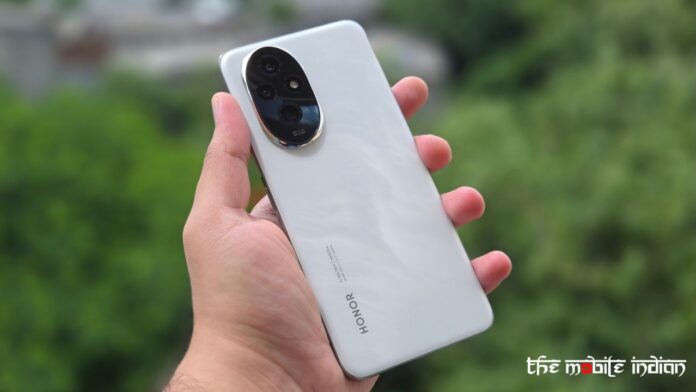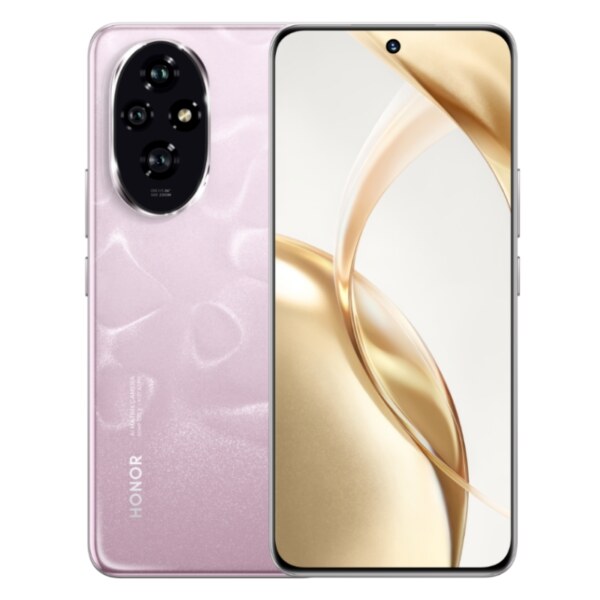The Honor 200 5G has recently launched in India with a starting price of Rs 34,999, positioning itself against competitors like OnePlus, iQOO, Realme, Samsung, and other leading brands in this segment. As a relatively new player, can Honor carve out a niche in the sub-Rs 40,000 market with the Honor 200 5G? Let’s explore this in our review of the device.
Design: Appealing and Beautiful
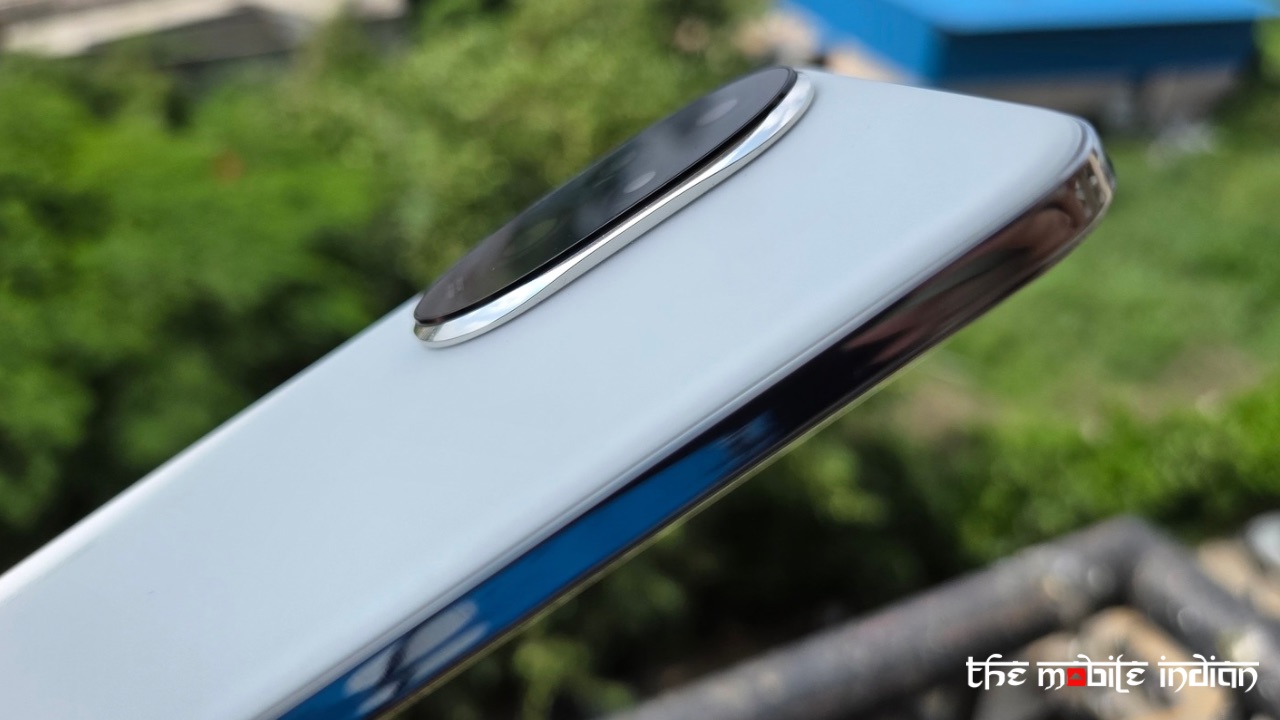
The Honor 200 5G is available in two colours, out of which we got the more appealing one in our opinion, and that’s the moonlight white variant. This version of the Honor 200 5G gets a white back panel with a wavy and cloudy pattern on the back which looks elegant and attractive.
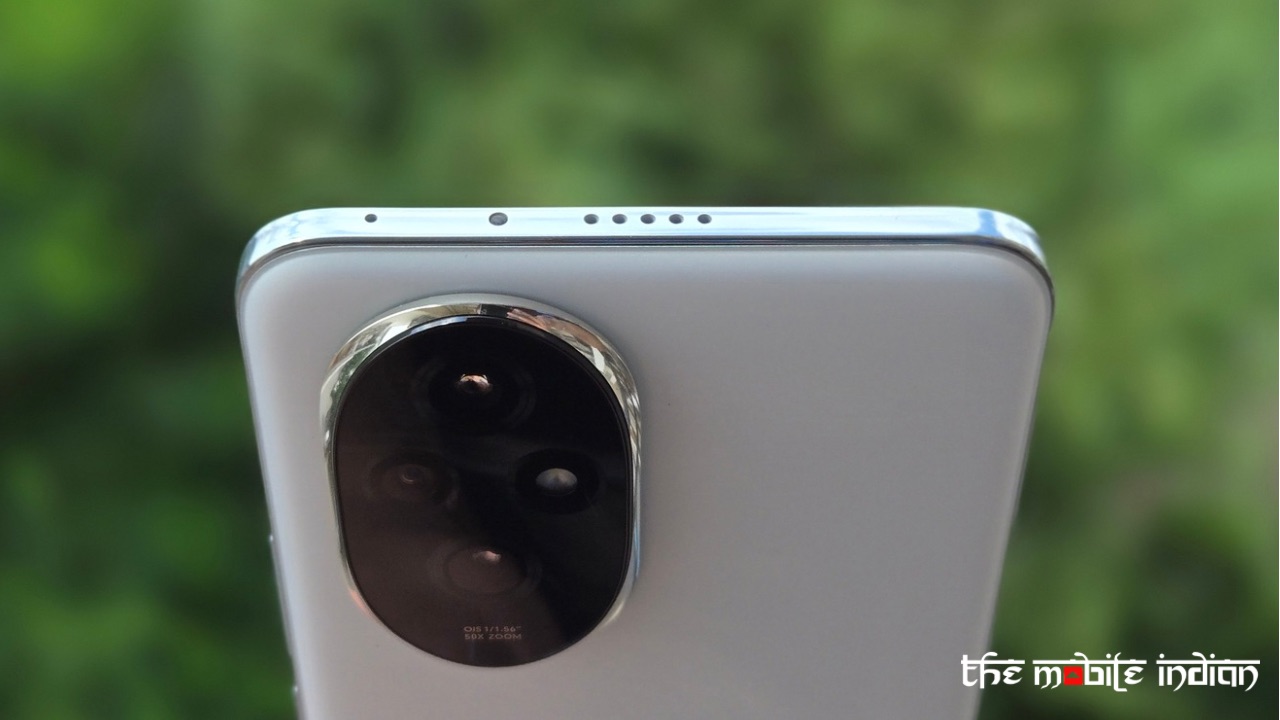
The oval-shaped camera array sits at the top right which is an element that actually helps make the device stand out from the crowd. The frame gets a glossy silver finish and is made of plastic, same as the back panel. While the back panel exudes a premium feel in the hand and doesn’t feel like plastic at all, the frame does bring down that premiumness but not by much.
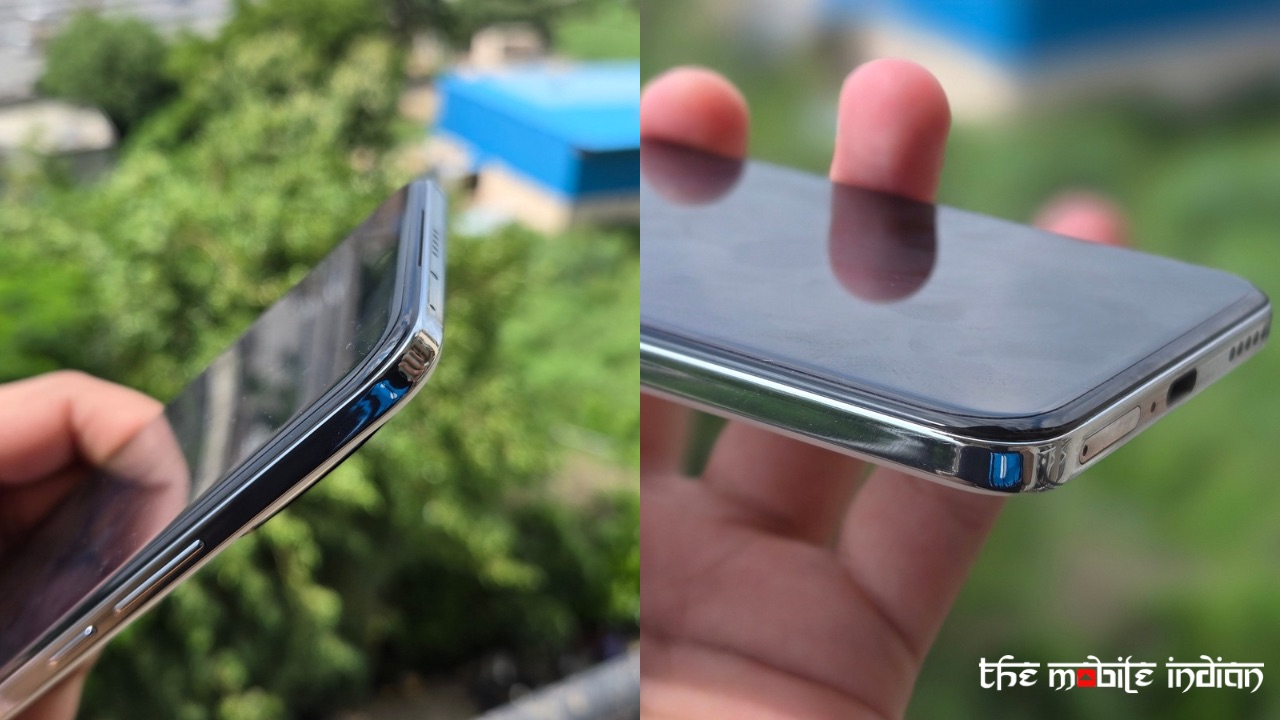
The buttons on the right pack a tactile feel when clicked. Then there’s a speaker grille at the bottom and a fake one at the top, likely to maintain the aesthetic. However, you do get a stereo speaker setup where the earpiece doubles as the second speaker apart from the second one at the bottom.
The audio quality of these speakers is actually quite good. They pack a little punch, get adequately loud, and the sound doesn’t get distorted at high volumes, either.
What I totally dislike about the device is the vibration motor—it’s the same one used in budget devices. At this price point, I’d at least expect an X-axis linear vibration motor, but unfortunately, Honor doesn’t offer that.
Overall, the phone feels lightweight in the hand, while being premium. It is also comfortable to hold and use with one hand due to the curved nature of the back panel and the body’s curved at all four corners. The design is both sleek and functional, ensuring a secure grip without compromising on aesthetics. The build quality is impressive, giving the device a solid feel that complements its elegant appearance.
Display: Sharp, Immersive, and Vibrant
The display on the Honor 200 5G is a 6.7-inch quad-curved OLED display with 1.5K resolution (1200 x 2664 pixels), 120Hz refresh rate, 4000 nits peak brightness, 10-bit colours, 3840Hz PWM dimming, and an in-display fingerprint scanner for Biometrics which during our testing worked accurately and was speedy as well.
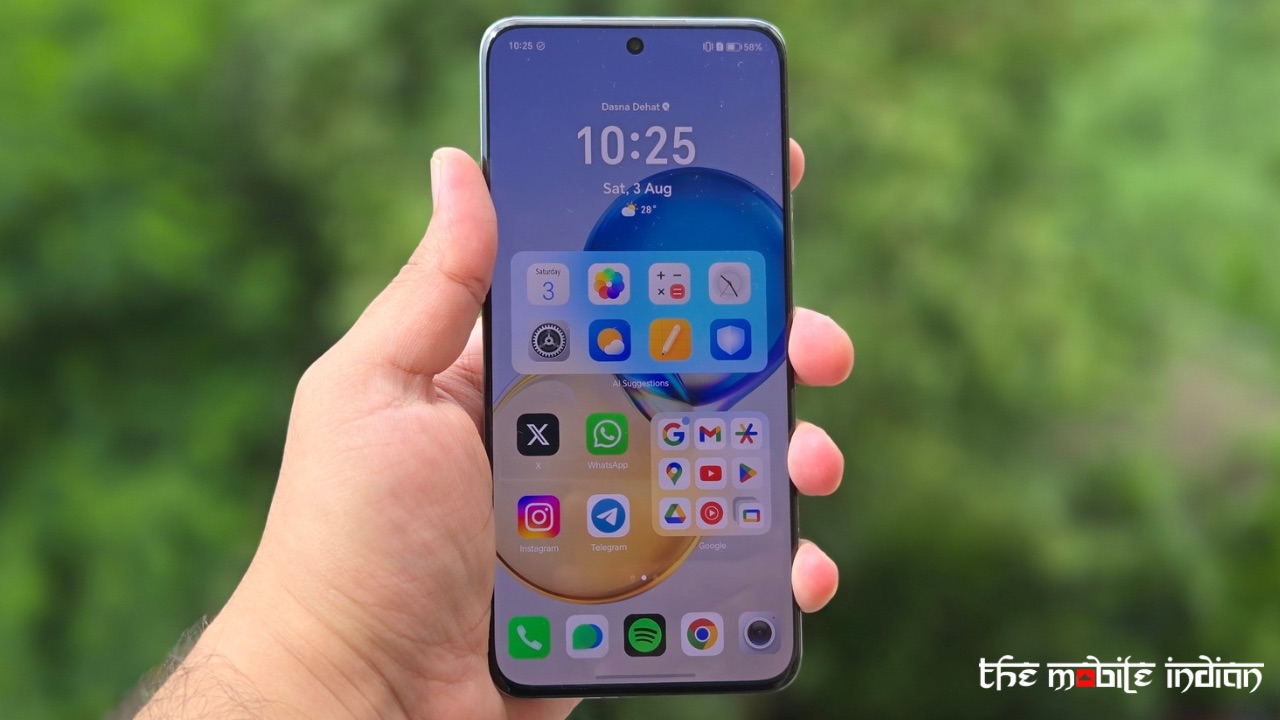
Going by the specs, you’d think it’s an excellent panel, and I can say that it surely is. The bezels are not even on all sides, and the chin is slightly thicker, but it’s still a minor difference that easily goes unnoticed. The viewing experience on this panel is immersive, and because it supports HDR in Netflix, watching shows and movies on this panel is a treat to the eyes.
The panel is also sharp, responsive, as well as smooth. The colours are vibrant and look impressive, be it while watching videos on YouTube or casually scrolling through Reels. However, the only thing to dislike about the panel is that when the refresh rate is set to Auto, it quickly switches over to 60Hz or 90Hz most of the time and barely stays at 120Hz.
I had the same complaint with previous Honor phones and the Honor 200 is unfortunately no different. In comparison, phones from OnePlus, Nothing, iQOO, etc, are the exact opposite, as they barely come below 120Hz even in auto mode.
Performance & Software: It has potential to do better
The Honor 200 5G packs the Snapdragon 7 Gen 3 Chipset paired with up to 12GB of RAM and up to 512GB of in-built storage. It is the first phone in India, alongside 200 Pro 5G, to run Magic OS 8.0 out of the box.
Performance-wise, I am not disappointed by Honor 200 by any means. In daily use, you’d barely see it break a sweat, be it while quickly switching through apps, opening newer ones, or even putting some load on it with heavier tasks, such as navigation.
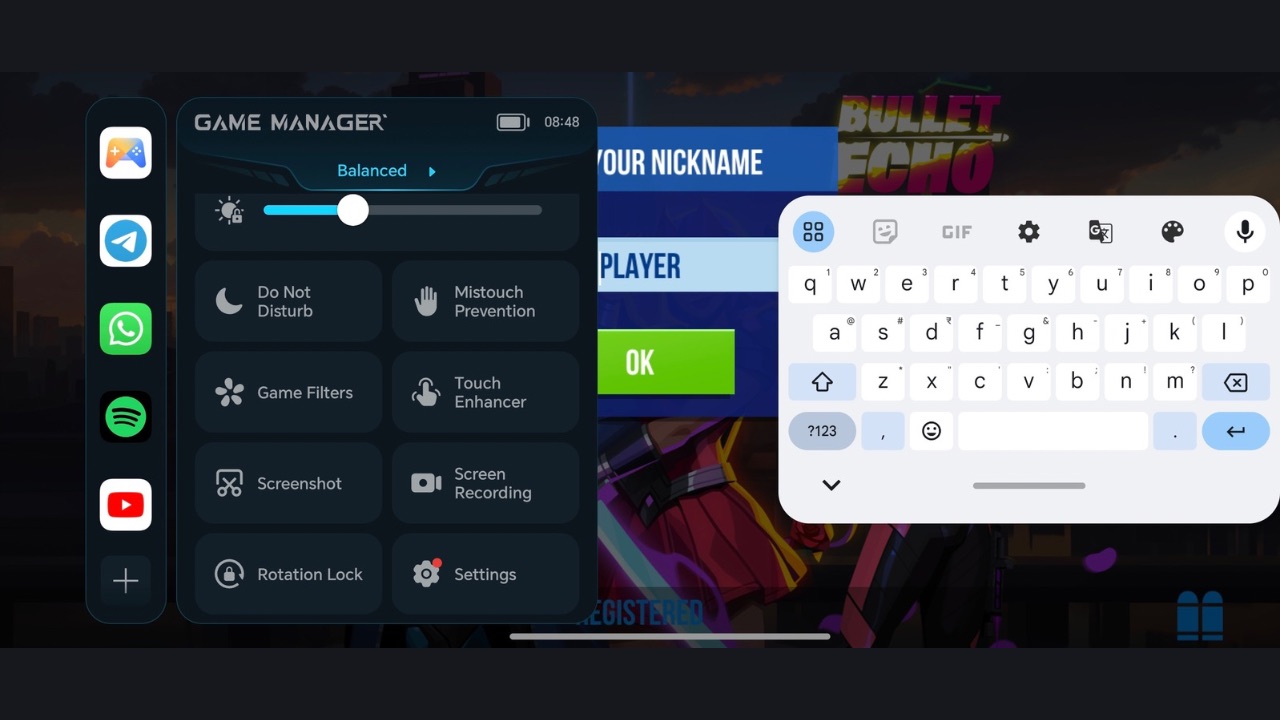
It can also handle some casual games with ease but you cannot expect it to perform like other competitors in the same space, such as the Realme GT 6T or the OnePlus Nord 4. Both those devices pack a better Processor for superior gaming. That is where I feel the Honor 200 lacks, because smartphones at its price point are generally capable of handling gaming comfortably.
Coming to the software, it has its own plus points and drawbacks. Speaking of the former first, Magic OS 8.0 is absolutely one of the smoothest skins I have used in the Android world. The animations are seamless and responsive. There’s a bounce to them when you open or close apps which feels natural, fluid, and appealing too.
There’s also a pill that appears around the front camera when you minimize audio playback, behaving similarly to the dynamic island on Apple iPhones. The animations of this pill are also fluid and responsive. Further, there’s a feature I liked quite a lot: it allows you to expand an icon on your home screen to show the App shortcuts alongside the icons (as shown in the rightmost screenshot below).
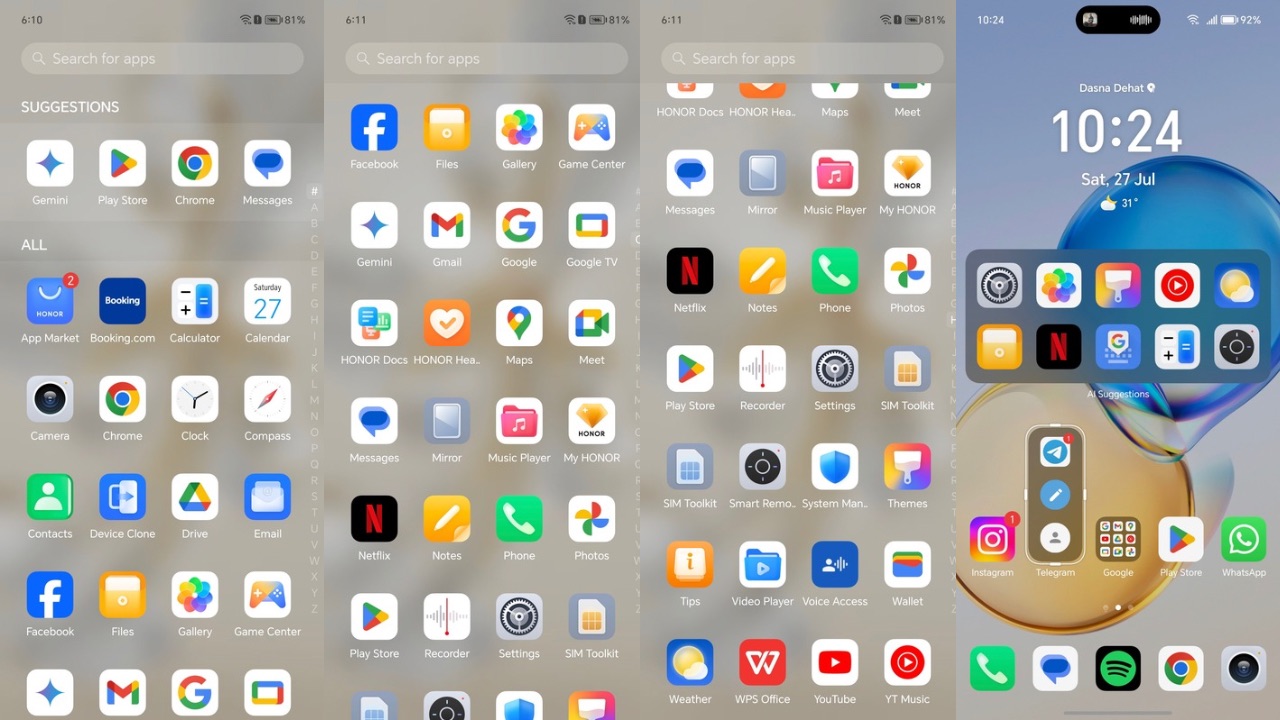
You also won’t find a lot of bloatware pre-installed when you first set up the device, which is something worth applauding.
There are also some AI features available in Magic OS 8.0. There’s an AI app suggestions widget that suggests which app you should open next based on your usage patterns. Next, there’s magic text, where you can extract text from photos and easily copy and paste it into related services.
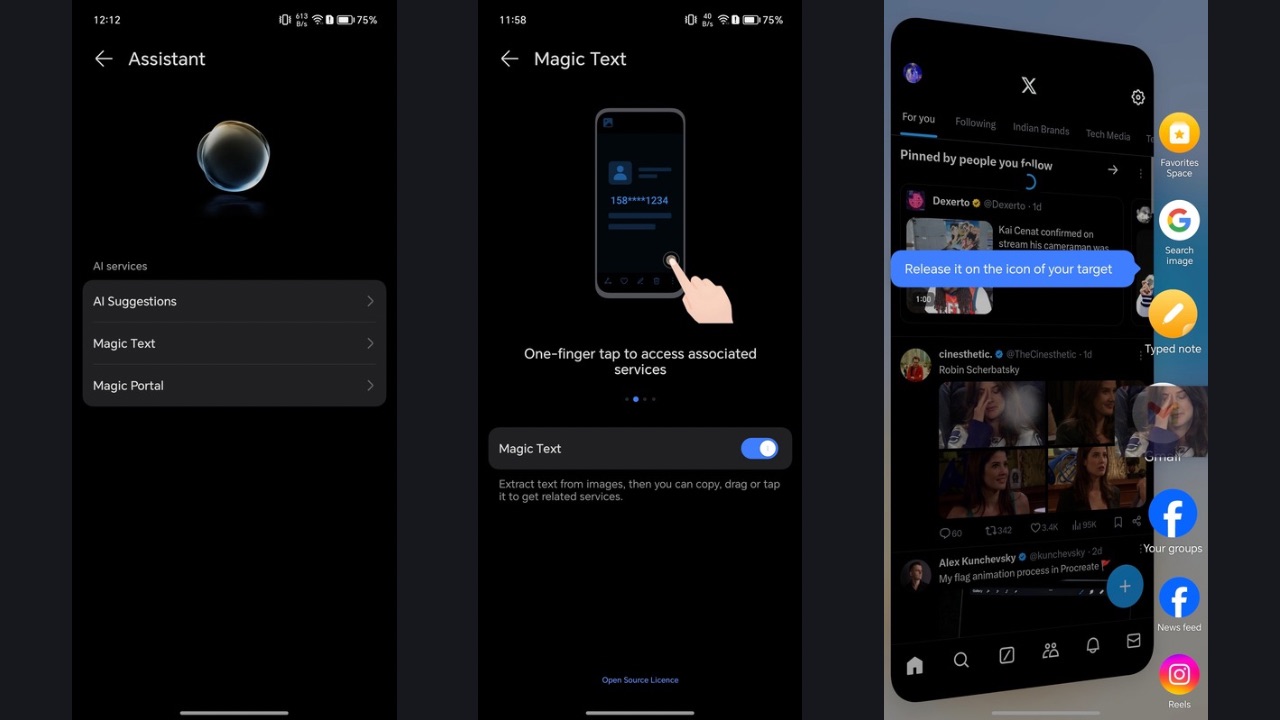
Finally, there’s Magic Portal, a sidebar containing certain apps. You can extract content from an app, say a Photo from X or Instagram, by tapping and holding on it. Then, you can drag that photo to the Magic portal and release it on the app icon of your choice to perform the desired action, such as attaching the photo to an email on Gmail or maybe doing a Google search. The feature works quite neatly and is well implemented across the system.
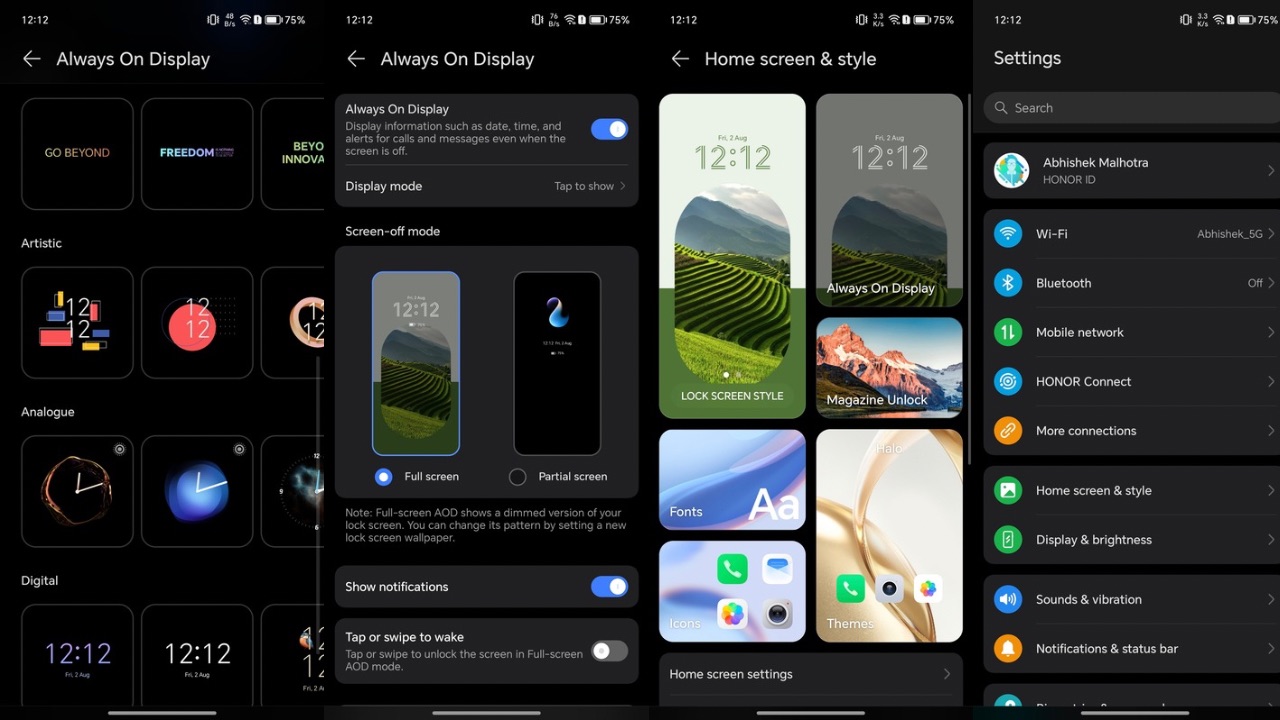
Next, there’s a good amount of customisation on offer, such as various lock screen styles and the full-screen AOD, among other AOD clock styles. However, the full-screen AOD cannot remain turned on at all times like in iPhone 15 Pro and the Galaxy S24 series. Instead, it shows up for a few seconds after you turn off your screen and then turns off. Fortunately, other classic AOD clock styles can stay on AOD at all times like how AOD should work.
Coming to the drawbacks, there were a few with Magic OS 8.0 which put me off. Firstly, the aggressive battery management which was also an issue in Honor 90 and X9b. Due to this, the device won’t send you notifications for certain apps when the screen is locked. You’ll have to manually remove them from the battery optimization list so they can run in the background and send you timely notifications.
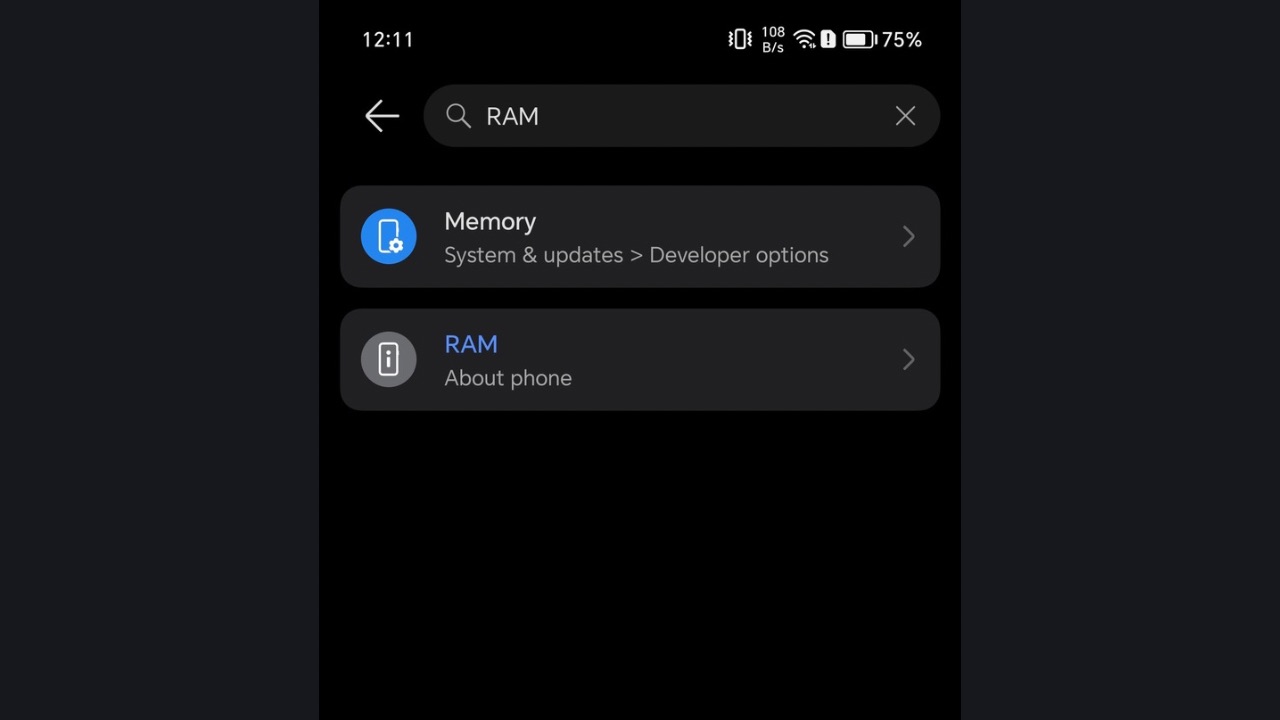
Further, I couldn’t find any option to turn off virtual RAM. Honor, by default, reserves 12GB from your storage, which functions as Honor RAM boost, but for some reason, the brand won’t let you choose the amount of RAM to reserve. What’s even worse is that you cannot turn it off, which should ideally be an option given to the user, considering Virtual RAM does affect the phone’s performance to some extent.
Read More: Honor Magic 6 Pro 5G Launched in India: Should You Consider it Over OnePlus 12 5G?
Finally, for the quirks, I could not install Instagram from the Play Store as it would say my device isn’t supported. I had to manually download and install Instagram via its APK file, but even after doing that, Instagram lagged and stuttered a lot. It’s ironic that a phone that advertises its cameras as the USP does not support Instagram.
Aside from these, Magic OS 8.0 didn’t disappoint in terms of smoothness. The phone ran on the June 2024 security patch out of the box which could have been of July considering the phone launched in that month.
I had no issues with the device’s connectivity performance.
Battery life: One of its strengths
The Honor 200 5G is backed by a 5200mAh battery with 100W fast wired charging. However, because Honor doesn’t ship the phone with a charger, we couldn’t test the maximum 100W charging speeds. With a 65W GaN Charger we had, the Honor 200 5G took around 1h 40m to charge from 1% to 100%. I’d assume the 100W charger should be able to top it up in less than half that time.
The 5200mAh cell of the Honor 200 5G performs exceptionally well in most scenarios. Even with heavy usage patterns, I couldn’t kill the device in a day. With lighter usage patterns, such as scrolling through social media, some calling, browsing the internet, and listening to music alongside watching videos, the device can easily last close to 2 days. I could easily procure a screen-on time of 8 to 9 hours which is highly impressive.
Cameras: Couldn’t even nitpick
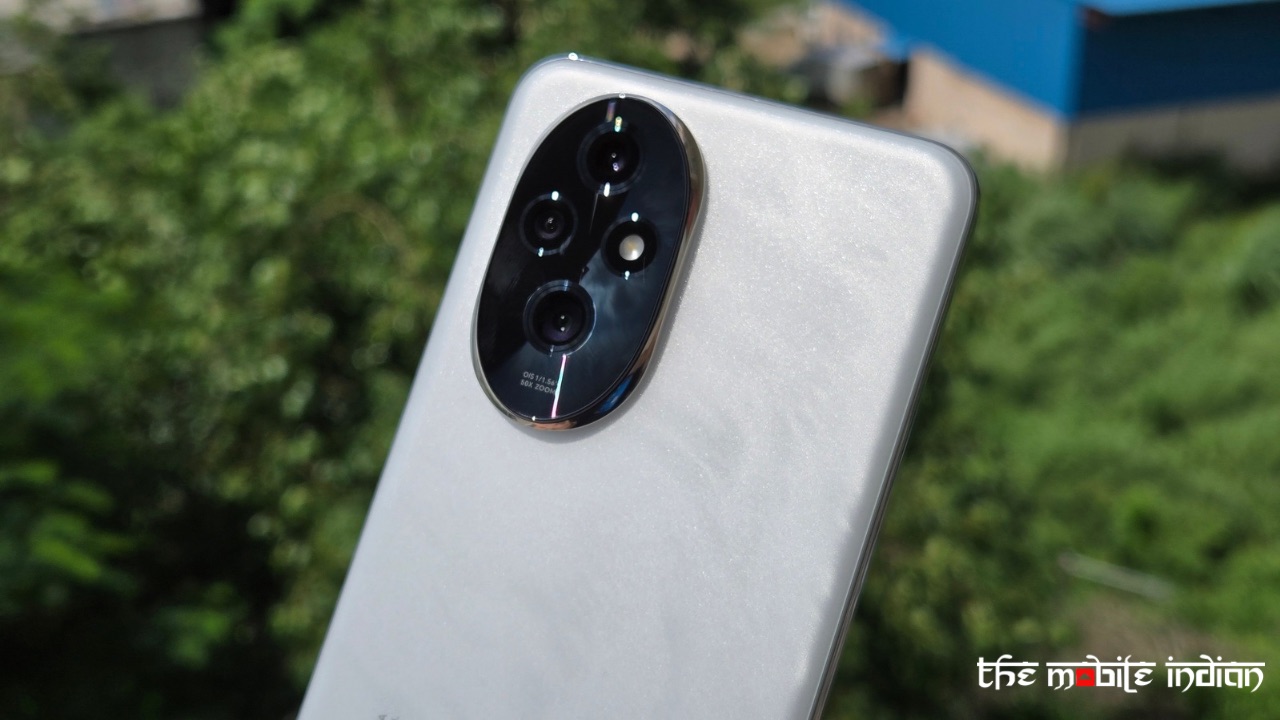
For cameras, the Honor 200 5G gets a triple rear camera setup, including a 50-megapixel f/1.9 primary sensor with OIS, a 12-megapixel f/2.2 ultra-wide angle sensor and a 50-megapixel f/2.4 telephoto sensor with OIS and 2.5x optical zoom. The front camera is equipped with an 50-megapixel f/2.1 sensor.



Cameras are what Honor 200 5G can handle nearly perfectly. Honour gives you three options to choose the tone of the photos, including natural, vibrant, and authentic. I personally liked the vibrant one the most and did most of my testing with the mode selected.

Even in vibrant mode, the colours were slightly on the natural side. Dynamic range is excellent, as are the detailing and sharpness in the shot. Exposure levels are well under control, and the overall aesthetic of the photos is quite impressive. Authentic mode gives you the highest vibrancy in a shot, taking away the natural colour tone.

There’s little to no colour difference in ultra-wide-angle photos. While the detailing slightly suffers, it’s nothing major that adversely affects the quality of the shots. The ultra-wide shots are still impressive, and the dynamic range is good.



Once you begin zooming in, the colours also begin to shift but at 2.5x optical zoom, the photos still come out impressive. Again, the dynamic range is outstanding while the minute details in the shots are also retained well. Photos clicked with the max zoom (50x) are barely usable and look worse than an oil painting.However, up to 10x zoom, the photos captured by the 50MP telephoto sensor are well-composed.
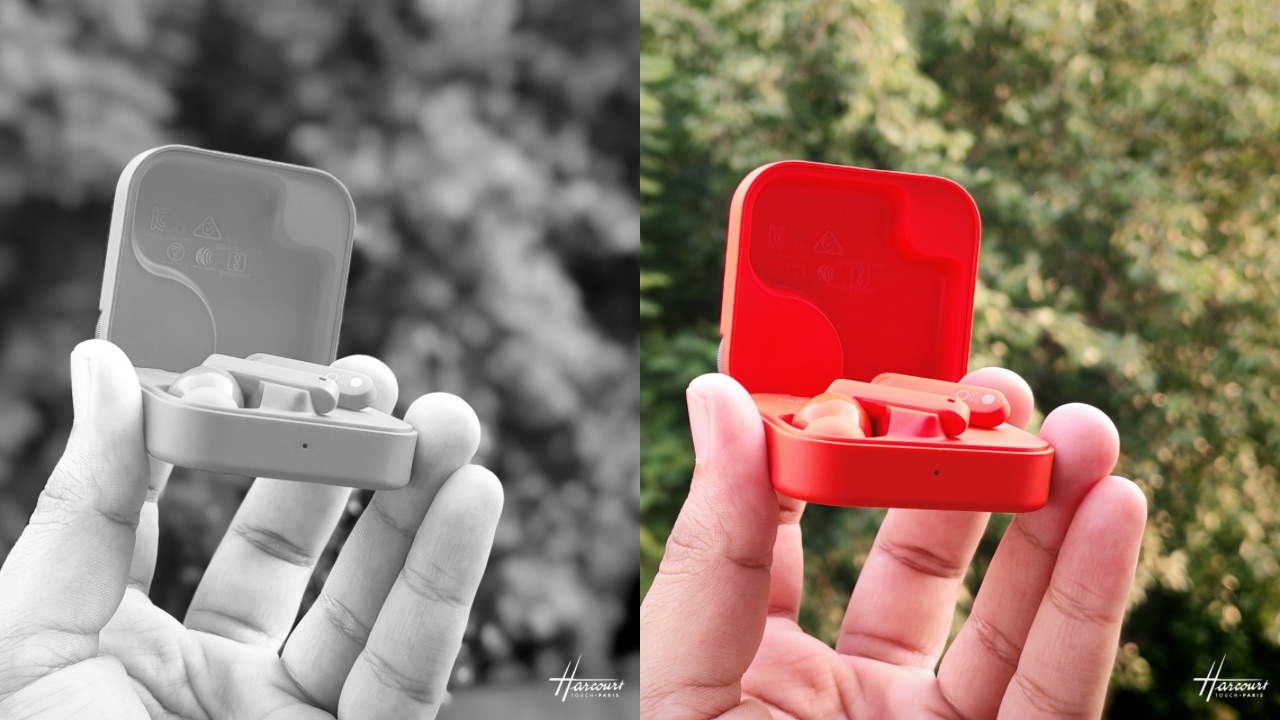
The portrait shots from the Honor 200 5G are, once again, some of the best I have seen. While the EDGE detection can be a miss at times, it does click impressive portrait shots in terms of how natural the bokeh effect looks and how well the camera handles the colours and the detailing in each shot.
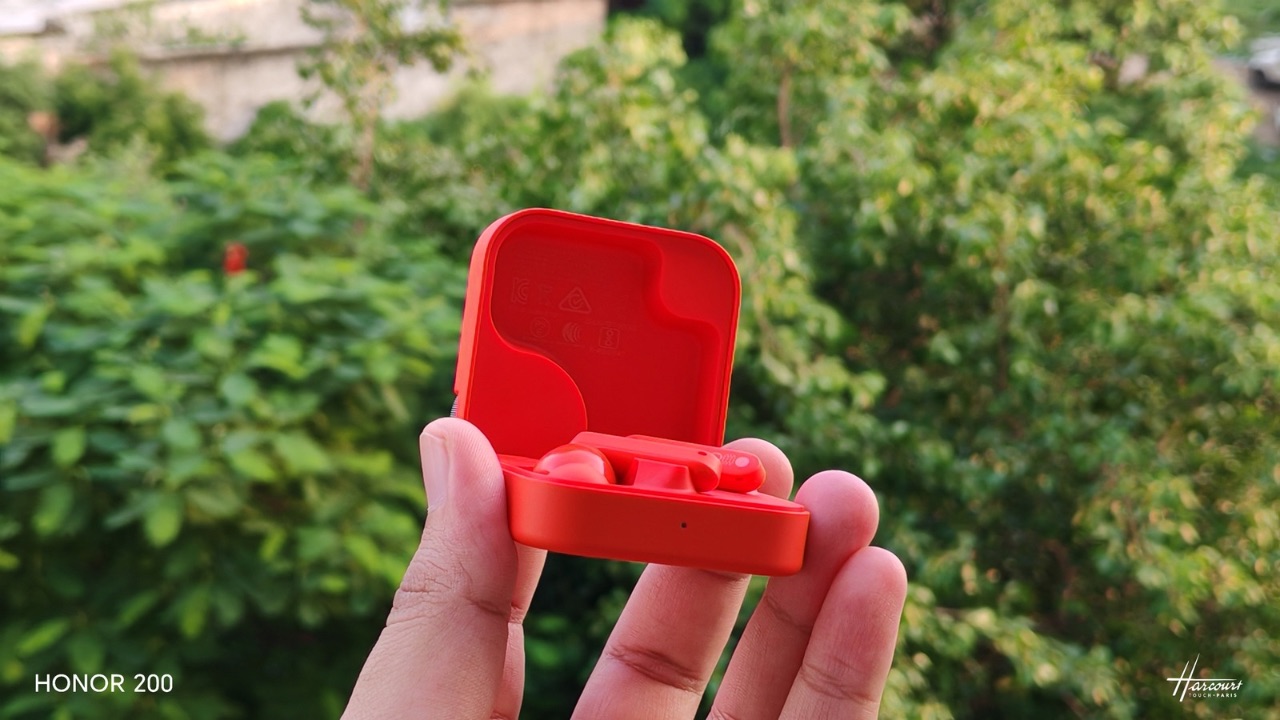
The Harcourt mode also offers you three different types of modes to choose from, including Harcourt colour, classic, and vibrant. The vibrant one clicks the best shots in my opinion, while the colour mode makes the shot more natural. The Harcourt classic shoots quite a detailed black and white portrait photo definitely appealing to the eye.

The selfies from the front sensor are the same as the ones clicked from the rear sensor, full of details and sharpness. The skin tones are impressively accurate, closely resembling their real-world appearance. Selfie lovers can easily rely on this camera.

Night shots look amazing too. The exposure management helps, while there’s absolutely no noise in the shots. The colours are also picked up well. Under artificial lighting, once again the camera doesn’t fail to impress. It shows you the details even when you zoom into the photo while colours retain their natural look.
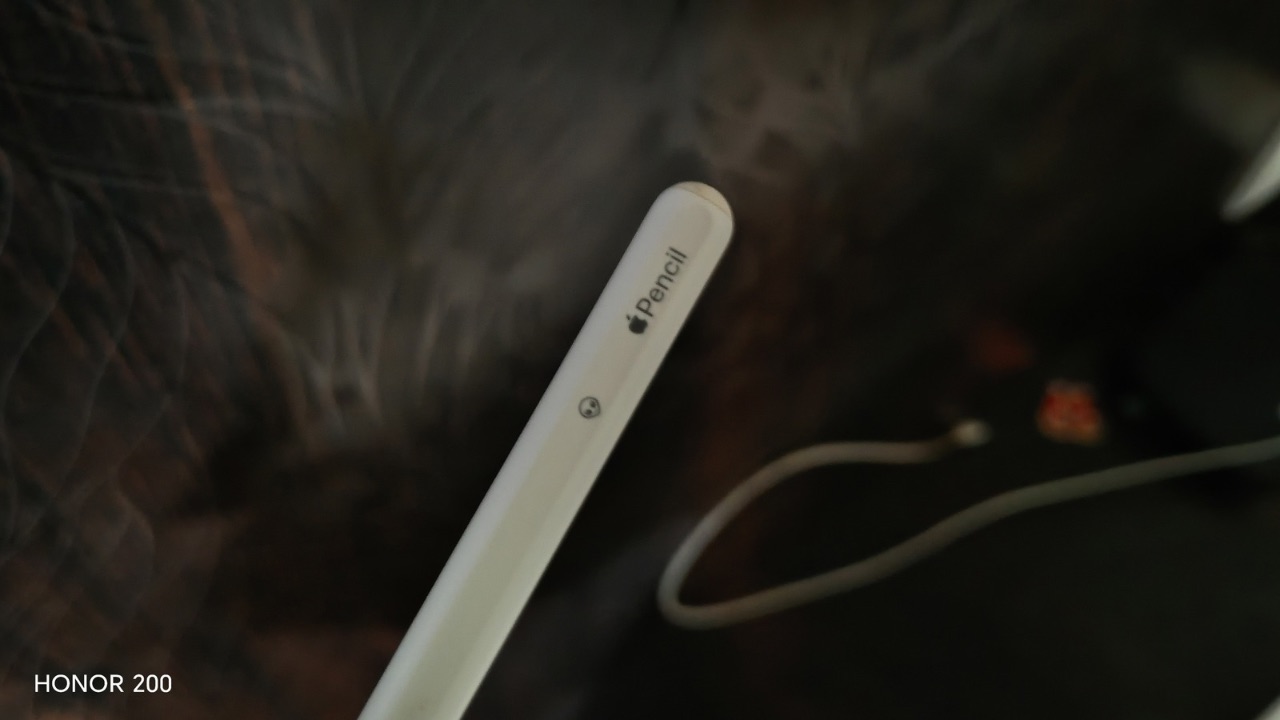
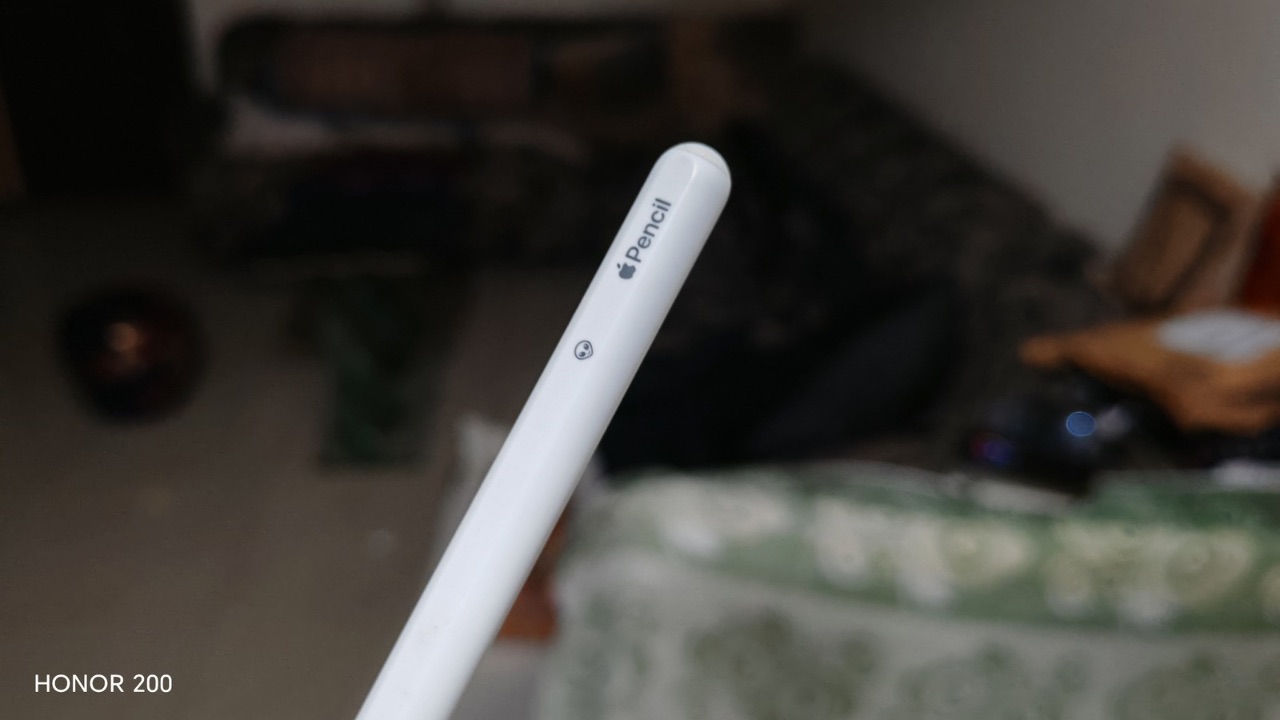
Finally, under low-light situations, even when it’s close to pitch dark like in the shot above, the device manages exposure without any issues and once again spits out a photo free from any noise. Moreover, even though the subject wasn’t clearly visible, the camera could still focus without any issues or hiccups.


